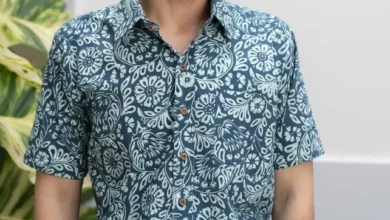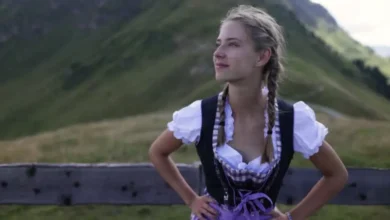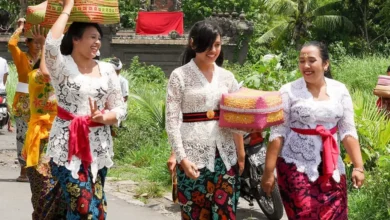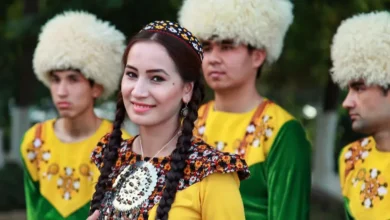The vibrant and culturally rich African dashiki is more than just clothing; it’s a statement, a symbol of pride, and a testament to the continent’s diverse heritage. While often associated with numerous African countries, the dashiki holds a particularly significant place in Ghanaian culture, reflecting its unique history and artistic expressions.
This article delves into the fascinating world of the Ghanaian dashiki, exploring its history, variations, significance, and its ongoing evolution in contemporary fashion.
A Brief History of the Dashiki
The origins of the dashiki are complex and debated, with various theories pointing to different regions and historical periods. While pinpointing a single origin is difficult, most agree it evolved from traditional West African garments. The name itself is believed to derive from the Hausa word “dan shika,” meaning “someone who is well dressed” or “a person of elegance.” This reflects the dashiki’s historical association with status and prestige.
Historically, dashikis were crafted using locally sourced materials, often hand-woven fabrics like Kente cloth (in Ghana) and other vibrant textiles. Their designs varied considerably across different ethnic groups and regions, reflecting local traditions and artistic styles. However, the common thread is the loose, comfortable fit, typically featuring a collarless neckline and long or short sleeves. This comfortable fit made it ideal for warm climates.
See also African Kilts: Exploring the Rich Traditions of Uganda and Kenya
African Kilts: Exploring the Rich Traditions of Uganda and KenyaThe Ghanaian Dashiki: A Unique Identity
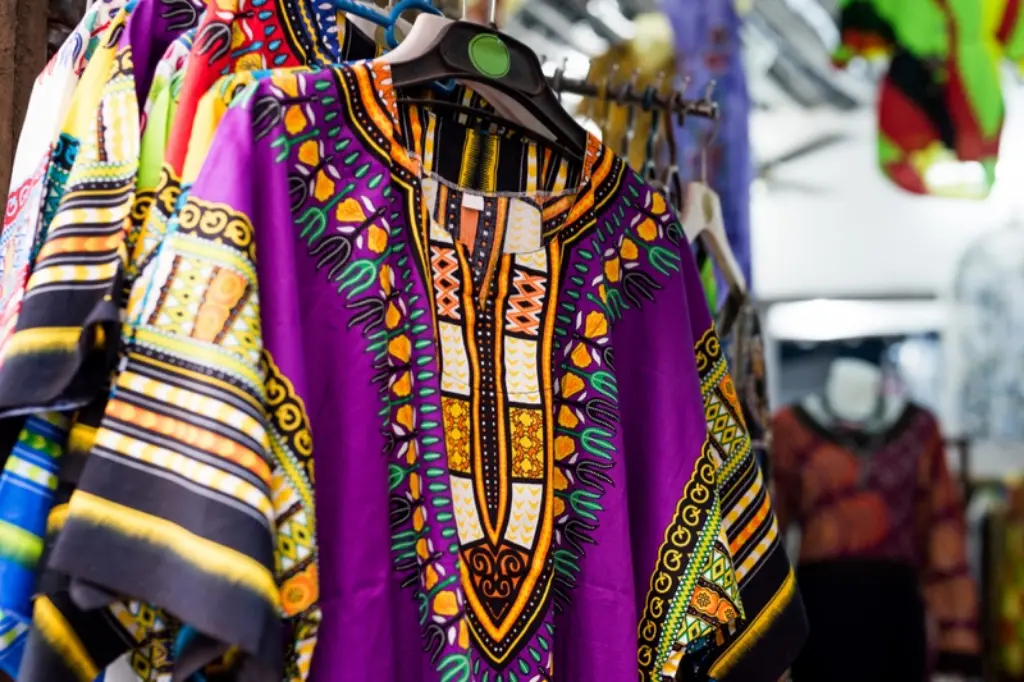
In Ghana, the dashiki has a rich and interwoven history with the country’s diverse cultural tapestry. While the basic form of the garment remains consistent, Ghanaian dashikis often incorporate unique elements reflecting the nation’s various ethnic groups and artistic traditions.
The use of Kente cloth, for example, elevates the dashiki to a symbol of high status and cultural pride. Kente cloth itself is a rich tapestry of history, with its vibrant colors and intricate designs telling stories and representing different aspects of Ghanaian society.
Beyond Kente, other Ghanaian fabrics, including Ankara prints and Bogolanfini (mud cloth), are frequently used in dashiki designs. These fabrics introduce diverse patterns and colors, enhancing the dashiki’s visual appeal and cultural representation. The design choices often depend on the occasion, reflecting a deep understanding of societal norms and expectations. A dashiki worn for a traditional ceremony will be vastly different in design and material from one worn casually.
Variations in Ghanaian Dashiki Styles
- Kente Dashiki: This is perhaps the most iconic Ghanaian dashiki, incorporating the vibrant and richly symbolic Kente cloth. The intricate weaving patterns, often featuring geometric designs and bold colors, make each Kente dashiki a unique piece of wearable art.
- Ankara Dashiki: Ankara prints, with their bold and colorful patterns, are another popular choice for Ghanaian dashikis. These fabrics offer a wide range of designs, allowing for creative customization and personalization. Ankara dashikis can range from simple, everyday wear to more elaborate styles for special occasions.
- Bogolanfini (Mud Cloth) Dashiki: This style showcases the earthy tones and intricate designs of Bogolanfini cloth. The natural dyes and unique dyeing process create a distinct aesthetic, making these dashikis stand out with their rustic charm and sophistication.
- Modern Interpretations: Contemporary Ghanaian designers are constantly innovating, blending traditional dashiki styles with modern design elements. This results in a fusion of traditional aesthetics and contemporary fashion, making the dashiki relevant to a new generation.
The Significance of the Dashiki in Ghanaian Culture
The dashiki’s significance in Ghana extends beyond mere clothing; it represents cultural identity, social status, and personal expression. The choice of fabric, color, and design often conveys important social messages. For instance, the use of Kente cloth signifies prestige and respect, often worn for ceremonial occasions or by individuals holding influential positions within the community.
See also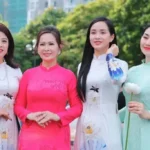 Ao Dai: The Soul of Vietnam
Ao Dai: The Soul of VietnamThe dashiki is also a significant garment in religious and spiritual contexts. Specific designs and colors may hold spiritual meaning within different Ghanaian cultures, adding a layer of profound significance to the clothing. The vibrant colors and intricate patterns are often believed to possess spiritual power or represent specific deities or ancestors.
Furthermore, the dashiki plays a vital role in social gatherings and celebrations. Wearing a dashiki demonstrates a sense of community and shared cultural identity. The dashiki is not just an item of clothing; it is a powerful symbol unifying Ghanaians across diverse backgrounds.
The Dashiki’s Global Reach and Contemporary Relevance
The dashiki’s popularity has transcended national borders, becoming a globally recognized symbol of African style and identity. Its adoption by the Pan-African movement further solidified its significance as a powerful symbol of unity and pride. The dashiki’s simple yet elegant design, combined with its versatility, has made it a favorite among fashion designers and individuals alike.
Today, the dashiki is experiencing a resurgence in popularity, particularly among younger generations. Designers are constantly reinterpreting traditional styles, incorporating contemporary elements while retaining the dashiki’s core essence. This fusion of tradition and modernity has resulted in a diverse range of designs, appealing to a broader audience. From casual wear to high fashion, the dashiki’s adaptability has ensured its enduring relevance in the ever-evolving world of fashion.
Modern Dashiki Trends
- Modern Fabrics and Prints: While traditional fabrics remain popular, designers are incorporating contemporary materials and innovative printing techniques, creating unique and eye-catching dashiki designs.
- Asymmetrical Cuts and Silhouettes: Experimentation with unconventional cuts and silhouettes is giving the dashiki a more contemporary feel, adding a touch of modern flair to its traditional charm.
- Fusion Styles: Dashiki elements are being incorporated into other garments, creating hybrid styles that blend traditional African aesthetics with contemporary fashion trends. This showcases the dashiki’s versatility and adaptability.
- Sustainable and Ethical Production: A growing emphasis on sustainability and ethical production is influencing the manufacturing of dashikis, with designers prioritizing eco-friendly materials and fair labor practices.
Caring for Your Ghanaian Dashiki
To ensure the longevity of your beautiful Ghanaian dashiki, proper care is essential. The specific care instructions will depend on the fabric used. However, some general guidelines apply:
- Always check the care label: Before washing, carefully read the care label attached to your dashiki. This label provides specific instructions tailored to the fabric composition.
- Hand washing is often recommended: For delicate fabrics like Kente, hand washing is often preferred to prevent damage. Use a mild detergent and cool water, gently squeezing the garment to clean it.
- Machine washing (when appropriate): If machine washing is allowed, use a gentle cycle and cool water. Avoid harsh detergents or bleach, as these can damage the fabric.
- Air drying is best: Allow your dashiki to air dry flat or on a hanger to prevent shrinkage or damage. Avoid using a dryer, unless explicitly stated on the care label.
- Ironing (when necessary): If ironing is required, use a low setting and place a cloth between the iron and the garment to protect the fabric.
The Ghanaian dashiki is more than just a piece of clothing; it is a living testament to the country’s rich cultural heritage and artistic traditions. Its enduring popularity, both within Ghana and internationally, reflects its timeless appeal and adaptability. As contemporary designers continue to reinterpret traditional styles, the dashiki’s significance continues to evolve, ensuring its relevance for generations to come. Its vibrant colors, intricate designs, and comfortable fit make it a treasured garment, symbolizing pride, identity, and the enduring legacy of Ghanaian artistry.
Whether you are a collector of African textiles, a fashion enthusiast, or simply someone who appreciates the beauty and cultural significance of clothing, the Ghanaian dashiki offers a captivating journey into the heart of Ghanaian culture and its artistic expressions.

